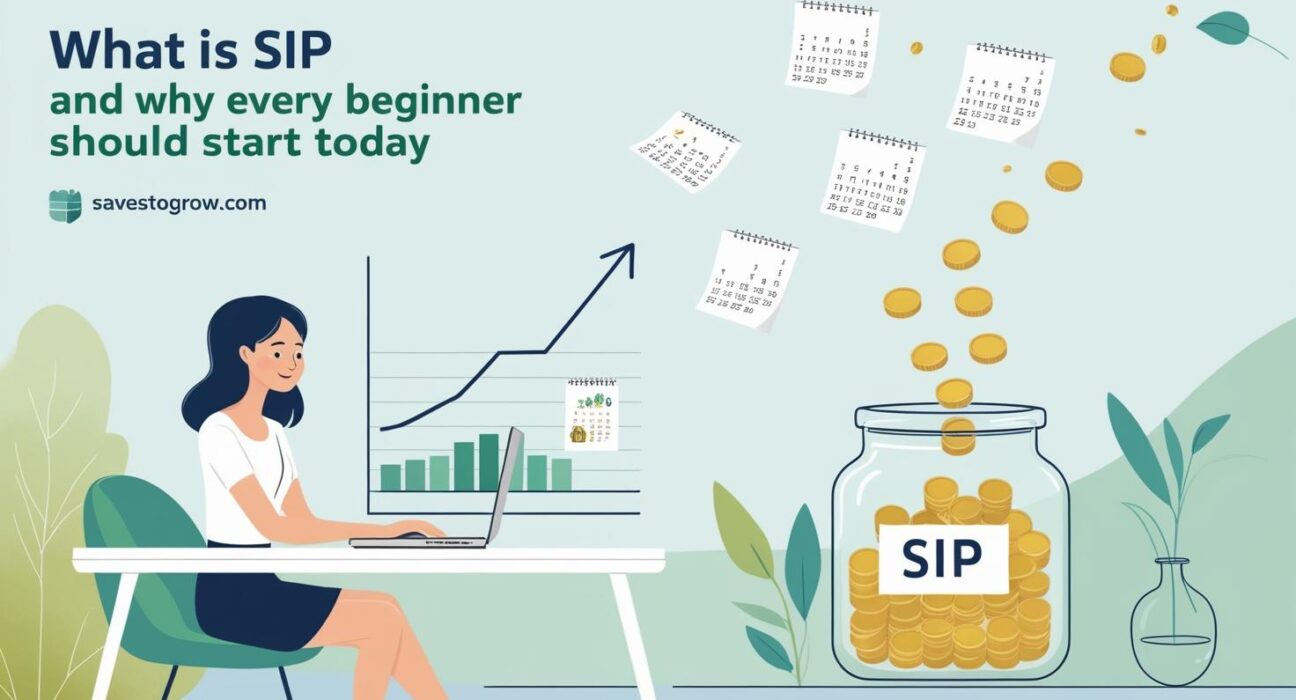If you’ve been meaning to start investing but feel overwhelmed by where to begin, there’s one strategy that stands out for beginners: SIP (Systematic Investment Plan).
Simple, disciplined, and beginner-friendly—SIP has become one of the most powerful wealth-building tools for everyday Indians. In this guide, we’ll explain what SIP is, how it works, and why starting today (not someday) could be one of the best financial decisions of your life.
What Is SIP?
A Systematic Investment Plan (SIP) is a way to invest a fixed amount regularly—typically every month—into a mutual fund.
Instead of making a one-time lump sum investment, you put in smaller, consistent amounts that accumulate over time. Think of it like a financial gym routine—small steps, big results.
Example: You invest ₹2,000 every month in an equity mutual fund. Over 5 years, even without noticing, you’ve invested ₹1.2 lakh—and it may grow far beyond that, depending on market returns.
How Does SIP Work?
Here’s what happens when you start a SIP:
- You choose a mutual fund (e.g., equity, debt, balanced).
- Set your SIP amount (₹500 is the minimum in most cases).
- Choose frequency (monthly is most popular).
- The fund automatically debits your bank account and buys units of the mutual fund at that day’s NAV (Net Asset Value).
Over time, SIP benefits from a concept called rupee-cost averaging—you buy more units when markets are low, and fewer when they are high, reducing the overall cost.
Why Every Beginner Should Start SIP Today
1. It’s Simple and Automated
You don’t need to time the market or have in-depth financial knowledge. Just set it and let it grow.
2. Helps Build Financial Discipline
A monthly SIP becomes a habit—like paying a bill to your future self.
3. Perfect for Small Investors
No need for lakhs to invest. Start with ₹500/month and build from there.
4. Takes Advantage of Compounding
Even small amounts can grow exponentially over the years. The earlier you start, the more powerful your returns.
5. Weather Market Volatility
You invest across highs and lows, which reduces risk and averages cost over time.
SIP vs Lump Sum Investment
| Feature | SIP | Lump Sum |
|---|---|---|
| Investment Style | Regular, small contributions | One-time large investment |
| Market Timing | Not needed | Important |
| Emotional Stress | Low | High (especially in volatile markets) |
| Ideal For | Beginners, salaried individuals | Those with large surplus |
How Much Should You Start With?
There’s no magic number, but here’s a simple rule:
Start with whatever you can spare each month—even ₹500 is enough.
Use a SIP calculator to estimate future returns. For example:
- ₹2,000/month for 10 years at 12% = ₹4.6+ lakhs
- ₹5,000/month for 20 years at 12% = ₹50+ lakhs
Best SIP Funds for Beginners (2025)
⚠️ These are not financial recommendations but examples. Always do your own research or consult a financial advisor.
- Parag Parikh Flexi Cap Fund
- Mirae Asset Large Cap Fund
- Axis Bluechip Fund
- HDFC Hybrid Equity Fund
Final Thoughts
The best time to start a SIP was yesterday. The next best time is today.
You don’t need to be rich, expert, or lucky. SIP helps you build wealth slowly, steadily, and smartly—especially if you start young and stay consistent.
Don’t wait for the perfect moment. Create it. Start your first SIP now and let time do the heavy lifting for your financial future.






